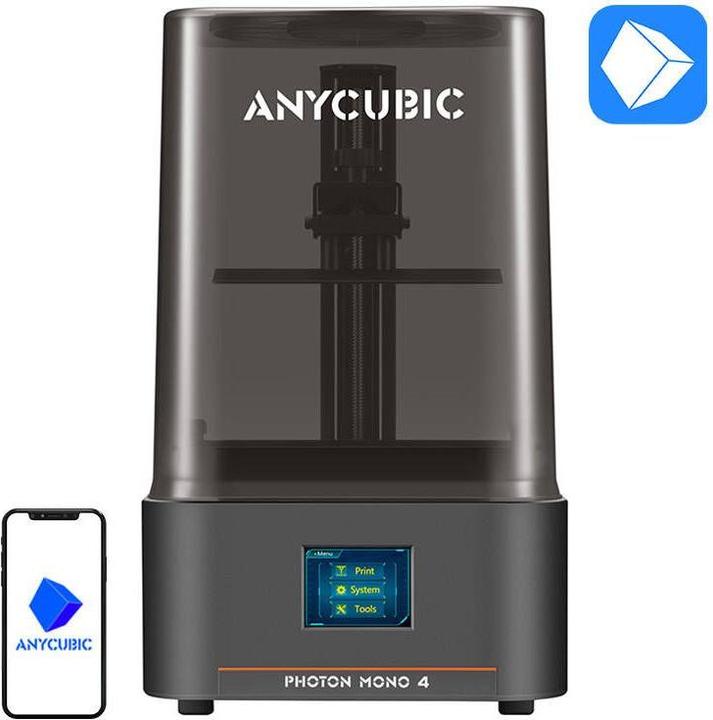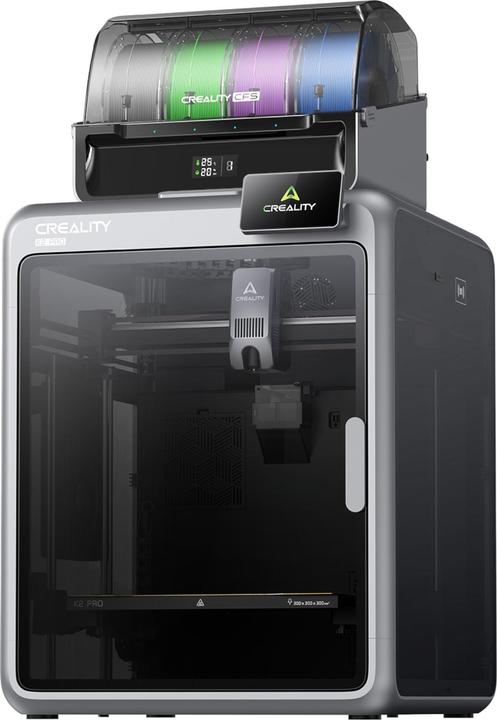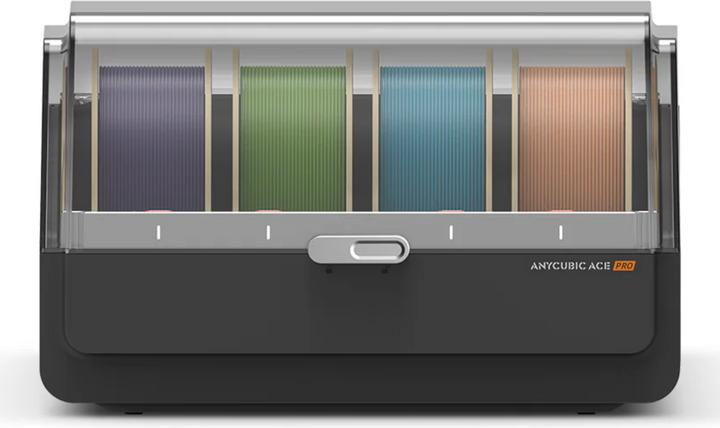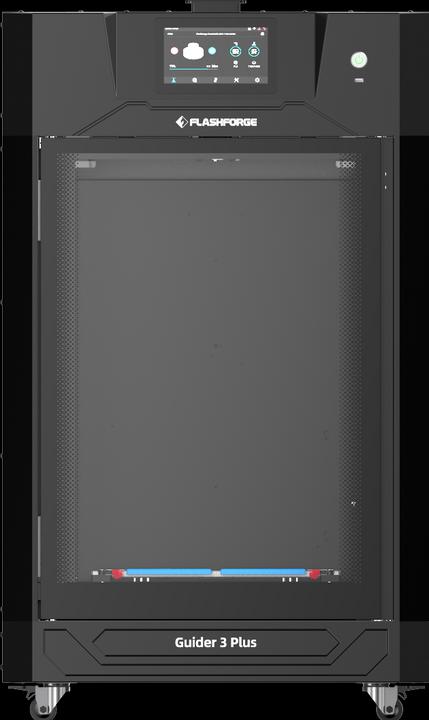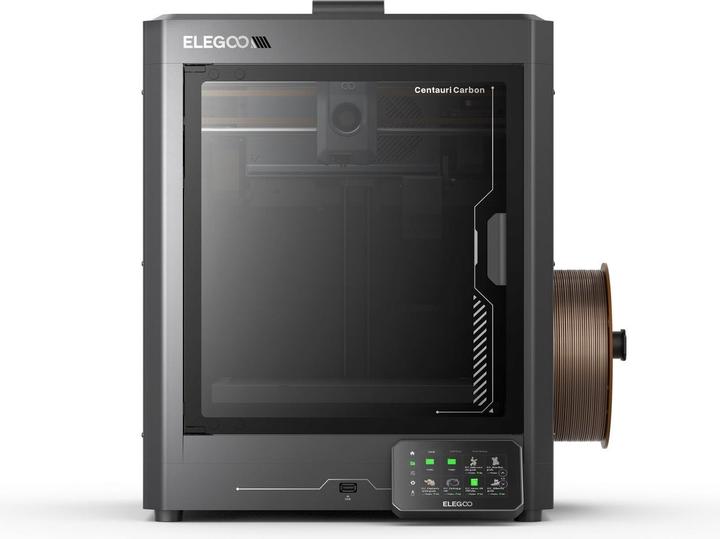
Too Many 3D Printers? Here’s How to Choose the Right One
Check out these five key factors to help you find the 3D printer that matches your needs.
Last updated 1 day ago. Automatically generated content.


Select options and limit the number of products
The 3D printing method refers to the technology a printer uses to create objects from digital designs, shaping the final product's detail, strength, and finish. Choosing the right method is important because it affects print quality, speed, material compatibility, and the types of projects you can complete, whether for prototypes, models, or functional parts.
Popular options (you can select more than one)
Fused deposition modeling (FDM)
Typical price
370,– to 1100,–Builds objects layer by layer by melting and extruding thermoplastic filaments.
Popular for its affordability and ease of use, FDM is ideal for beginners and general-purpose prototyping.
Bestseller
Fused Filament Fabrication (FFF)
Typical price
230,– to 1200,–Uses a similar process to FDM, heating and extruding filament to form layers.
FFF is widely compatible with many materials and is suitable for home, educational, or entry-level professional projects.
Bestseller
Stereolithography (SLA)
Typical price
400,– to 710,–Cures liquid resin layer by layer using a laser or light source for high precision.
Offers smooth surface finishes and fine details, making it ideal for miniatures, dental models, or jewelry prototypes.
Bestseller
Digital Light Processing (DLP)
Typical price
200,– to 550,–Uses a digital projector to cure an entire resin layer at once, resulting in fast print times.
Delivers high detail and smooth surfaces, suited for applications needing accuracy like dental models or intricate prototypes.
Bestseller
Max. print size (length x width x height) determines the largest single object a 3D printer can produce in one print job. This factor is important because it affects the types of projects you can complete, from small prototypes to larger functional parts or models.
Popular options (you can select more than one)
220 x 220 x 250 mm
Typical price
360,– to 520,–Supports printing objects up to 220 mm wide, 220 mm deep, and 250 mm tall.
Ideal for most everyday prints, hobby models, and small prototypes, making it a practical choice for beginners or home users.
Bestseller
256 x 256 x 256 mm
Typical price
440,– to 1500,–Provides a balanced print area for objects up to 256 mm in all dimensions.
Gives extra flexibility for medium-sized projects or multiple small parts in one go, suitable for users seeking more versatility.
Bestseller
300 x 300 x 300 mm
Typical price
890,– to 1100,–Allows for large-scale prints up to 300 mm in length, width, and height.
Best for advanced users or those creating big models, prototypes, or functional parts in a single print without splitting files.
Bestseller
3D printing resolution measures the smallest layer height a printer can achieve, directly impacting the detail and smoothness of printed objects. Selecting the right resolution is important for balancing print quality, speed, and material use, depending on your project's requirements.
Popular options (you can select more than one)
10 microns (0.01mm)
Typical price
300,– to 800,–Produces extremely fine layers for high-detail and ultra-smooth surfaces.
Best for intricate models, jewelry, or prototypes where precision and surface finish are top priorities.
Bestseller
50 microns (0.05mm)
Typical price
400,– to 1600,–Achieves a balance of fine detail and reasonable print times.
Ideal for professional prototypes, miniatures, or parts where visible layer lines should be minimal.
Bestseller
100 microns (0.1mm)
Typical price
370,– to 940,–Offers standard resolution with visible but fairly smooth layers.
Suitable for functional parts, rapid prototyping, or general hobby use where speed is preferred over maximum detail.
Bestseller
200 microns ( 0.2mm)
Typical price
490,– to 1600,–Prints thicker layers for faster results and reduced material use.
Best for large objects, drafts, or models where fine detail is less important and speed is essential.
Bestseller
Print material refers to the type of filament or resin a 3D printer uses to create objects, directly affecting durability, finish, and application. Choosing the right material impacts the strength, flexibility, and appearance of prints, making it crucial for achieving the desired results in different projects.
Popular options (you can select more than one)
PLA
Typical price
360,– to 1000,–PLA is a biodegradable plastic made from renewable resources, known for easy printing and minimal warping.
Best for beginners and decorative items, it offers a smooth finish but is less heat-resistant than other materials.
Bestseller
PETG
Typical price
370,– to 940,–PETG is a tough, semi-flexible plastic with good chemical resistance and transparency.
Ideal for functional parts and outdoor use, it combines ease of printing with improved durability over PLA.
Bestseller
ABS
Typical price
400,– to 1400,–ABS is a strong, impact-resistant plastic that can withstand higher temperatures.
Suitable for mechanical parts and prototypes, it requires a heated bed and good ventilation due to possible fumes.
Bestseller
Resin
Typical price
300,– to 710,–Resin is a liquid material used in SLA or DLP printers, producing highly detailed and smooth prints.
Best for miniatures, dental models, and jewelry, it offers fine detail but needs post-processing and safety precautions.
Bestseller
TPU
Typical price
360,– to 990,–TPU is a flexible, rubber-like plastic known for its elasticity and abrasion resistance.
Great for phone cases, gaskets, and wearable items, it allows for bendable designs that require durability and flexibility.
Bestseller
The brand factor in 3D printers helps buyers compare reliability, support, and innovation, which can influence print quality and ease of use. Major brands like Creality, Bambu Lab, and Anycubic each offer distinct advantages—Creality is popular for upgradability, Bambu Lab for advanced features, and Anycubic for accessible pricing—making brand choice an important consideration for both beginners and experienced users.
Popular brands (you can select more than one)
Creality
Well-known for reliable, open-source printers with a large community and upgrade options.
Ideal for hobbyists and tinkerers who want flexibility and a wealth of online resources.
Bestseller
Bambu Lab
Specializes in high-speed, feature-rich printers with advanced automation and multi-color printing.
Great for users seeking premium build quality, convenience, and fast out-of-the-box results.
Bestseller
Anycubic
Recognized for affordable, user-friendly models, especially resin and FDM printers.
Offers strong value for beginners and those looking for a cost-effective introduction to 3D printing.
Bestseller
FlashForge
Known for enclosed, ready-to-use machines with consistent performance.
Good choice for classrooms, small businesses, or anyone needing reliability and minimal setup.
Bestseller
3Doodler
Famous for handheld 3D printing pens rather than traditional desktop printers.
Best suited for creative projects, education, or quick prototyping without technical complexity.
Bestseller


